Google launches Pixel 3, Google Home Hub and Pixel Slate
![]()
Google's got a whole new raft of smarter smartphones, optimised smart displays and sleeker tablets with an increasing focus on AI, although we won't see all of them in Australia.
As expected, Google launched its new Pixel 3 range of phones at its "Made By Google" event overnight. Before the event, the Pixel 3 was widely leaked, from early suspicions around how it would outdo 2017's generally excellent Google Pixel 2 and Google Pixel 2 XL right down to full-blown reviews of handsets sold in Hong Kong just days before the launch.
Still, not everything around Google's Pixel 3, and especially the software it would run, was a known commodity prior to launch. Google kicked off the event by poking deliberate fun at all the leaks around the Pixel 3 with a bevy of leakers talking about how much it had indeed leaked, so it's still clearly got a sense of humour about the whole situation.
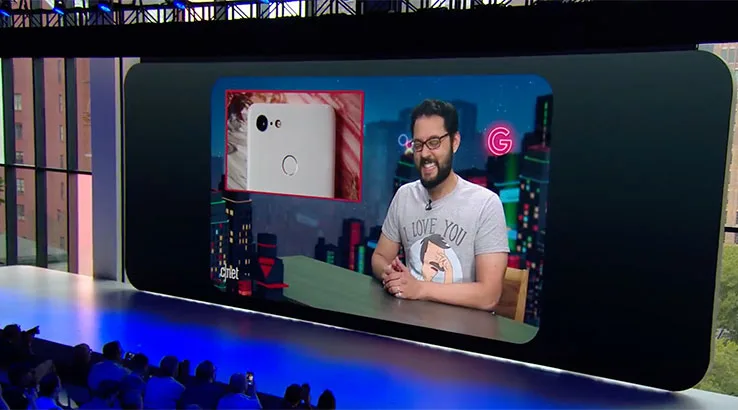
Rick Osterloh, Google's senior vice president of hardware kicked off the event around the theme of "help", highlighting Google's various services. "This year marks Google's 20th anniversary, and for 2 decades we've been working towards our mission of organising the world's information," he said.
"We love working on really hard problems that make life easier for people in big and small ways."
Osterloh highlighted Google's work in understanding language and streamlining the ways that Google uses and displays languages. Osterloh also talked up how the artificial intelligence (AI) in last year's Pixel 2 and Pixel 2 XL allowed them to remain top notch cameras, citing Google's work in search and analysis as the reason why it's remained competitive "in a year with so many great flagship phones."
Osterloh highlighted Google's work mixing hardware, software and AI as a key differentiator for its phones. "Our guiding principle here is exactly the same as it's been for 20 years. We want to respect each user as an individual and provide them with their own personal Google. Your experience and the help we provide you is unique to you. The Google Assistant is the best example of this.
"We're committed to the security of our users. One way we do this is at the OS level. Google Play Protect is the most widely deployed mobile protection service in the world."
Osterloh also talked up Titan security, a new chip that will protect your data both in Google's data centres and on devices.
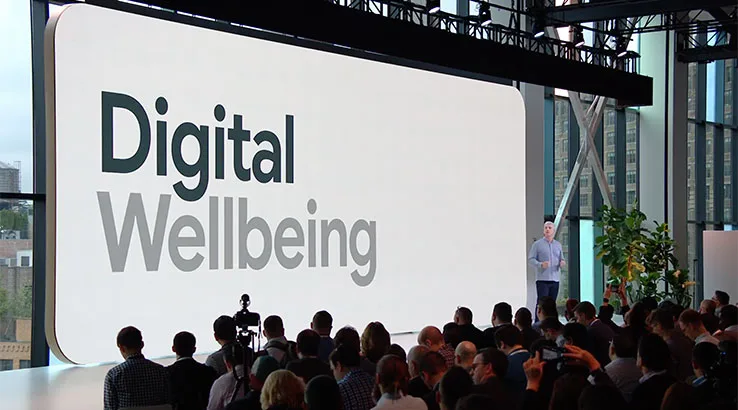
Google is also doubling down on its "Digital Wellbeing" focus, first announced at its Google I/O conference earlier in the year, which offers users a variety of ways to see how they're using their devices and how long they're utilising them for.
Osterloh wasted little time announcing the Pixel 3 smartphone, the Pixel Slate and the Google Home Hub – that's going to happen when those products had so widely leaked beforehand.
Google will work towards what Osterloh called a "thoughtful" home, via its wholly owned smart home subsidiary Nest.
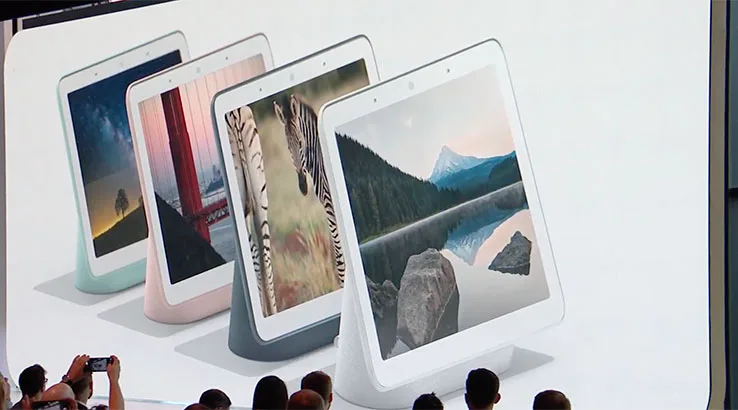
While it showed off third-party smart displays at I/O, Google used its launch to show off Google Home Hub, its own take on the concept. It's designed around how a display "designed specifically for your home" should look. The style is very much akin to Google's existing Google Home products, although unlike the third-party smart displays, there's no onboard camera.
"We very consciously did not put a camera on the hub, so that it was comfortable" said Google's Diya Jolly.
Ambient EQ on the Google Home Hub fine tunes the brightness of the display over the day, so it's sharper during daylight hours and less harsh at night. Google Home Hub will automatically switch its display off overnight. It's also fine tuned for YouTube search via voice, whether you're searching out video or music content.
Google Home Hub will come with six months of YouTube Premium before September, although it's not clear at this stage if that'll be a US-only offer.
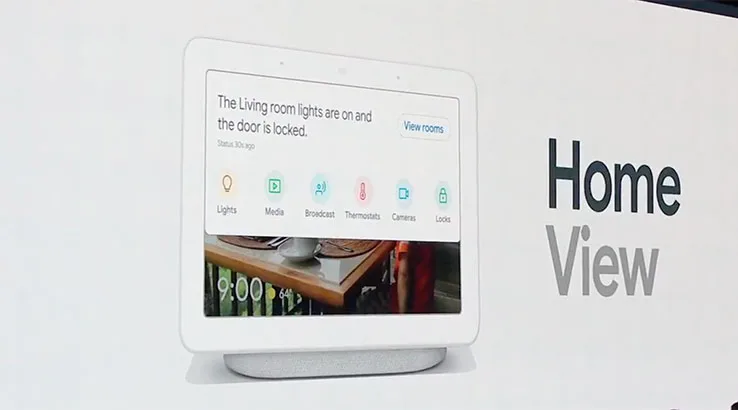
The Google Home Hub will include Google Home View, a simplified swipe-down blind that gives you a one-stop view of the status of your smart home devices. That's a feature that will also come to the Google Home app for smartphones as well.
The Google Home Hub will integrate with Google Photos to be what Jolly called "The world's best photo frame". Google Photos will now incorporate what it's calling "Live Album", a feature that will group photos by individuals via face recognition. Photos that are less than stellar will be excluded from those groups as will duplicate photos.
Google will also implement filters for Google Home Hub to stop younger family members from accessing unsuitable content.
Google Home Hub will sell for US$149, and it'll be available in Australia from 22 October, priced at $219.
![]()
The Google Pixel Slate had leaked well before the event as well, but what wasn't known was how Google would optimise it. Google sees the Pixel Slate as a "modern computing experience". It's finished in a midnight blue tone (obviously, somebody at Google knows I'm a sucker for blue products), with a 293ppi display.
Google's Trond Wuellner claimed that the Google Pixel Slate is using a custom display as well as front-facing stereo speakers. Google will offer three months of YouTube TV in the US for any new Pixel Slate or Pixelbook customer (again, that's not likely for Australia at this time).
The Pixel Slate has 8MP front and rear cameras, with a wide angle lens for video calling at the front. Wuellner claims that it's a "full desktop experience" that can run developer tools and Linux applications. It'll use machine learning to optimise over time and show you the apps it thinks you want to see in your app drawer. The power button also doubles as a fingerprint sensor for fast unlocking.
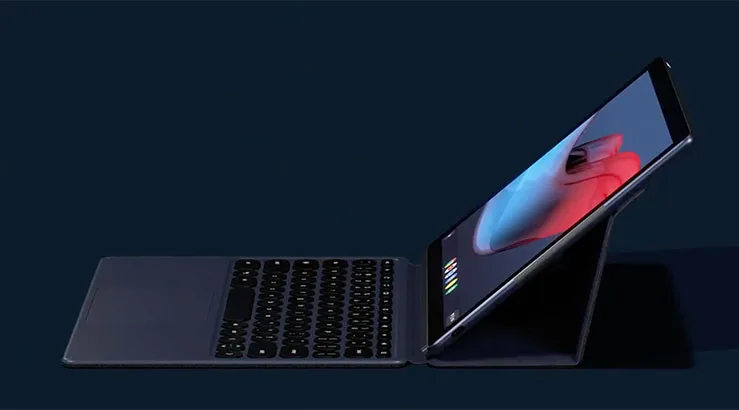
Google also demonstrated the Pixel Slate Keyboard, although like Microsoft's Surface Pro, it'll be an optional add-on rather than a bundled inclusion. The Pixel Slate will have its own ChromeOS version of Adobe Acrobat.
Pixel Slate keyboard will sell in the US from US$599 (depending on configuration), with the keyboard at US$199 and the Pixelbook pen at US$99. It'll go on sale in the US, Canada and the UK "later this year" – which almost certainly means if you want one in Australia, you'll have to import one.
![]()
Google Pixel 3 was always going to be the star of the show, but Google held off on giving details until last in the presentation. Google's claim is that the glass back has a new process that combines a glossy and matte finish. As expected, it'll ship as the Google Pixel 3 and Google Pixel 3 XL. It has an OLED display that (not surprisingly) Google calls "the best ever". It also has 40% louder speakers onboard, and they'll also come with six months of YouTube Music for new users, although again we'll have to wait for confirmation of Australian availability.
Google announced a partnership with noted photographer Annie Leibovitz to use the Pixel 3's camera. It's still a single-lens camera in a year when we're seeing a lot of dual-lens cameras, but Google's contention is that its AI-based approach and the Pixel visual core can still deliver top-notch photography.
The new "top shot" feature will, according to Google's Liza Ma, remove issues around getting imperfect shots. "Pixel 3's camera is smart enough to know a good photo when it sees it. It knows you want to see smiles instead of sneezes." she said. Top Shot will capture alternate shots, and suggest a better shot, a feature we've seen in other phones under various names.
Pixel 3's zoom will use the movements of your hand to capture alternate takes for crisper digital zoom – this would be Google's way of getting around not having a telephoto lens. It'll also allow for low-light photography with Google's machine-learning-based approach, and it'll come to earlier Pixel phones as well. Google took a not-so-subtle shot at its competition here too.
![]()
Google's claim is that the above shot is untouched, although we'll wait for our own testing to see how well that pans out over multiple shots.
You can't have a modern smartphone without a cute cartoon gimmick, and for the Google Pixel 3, that will be "Playground", a set of AR stickers, including The Avengers and Childish Gambino as options. Again, those are features that Pixel 2 and Pixel owners will get as well, albeit after the Pixel 3 launches.
Google Lens also gets an upgrade, with the ability to work instantly on-device, even, according to Google, without an Internet connection. The camera will also automatically focus, take selfies with a smile and allow for focus changes after a shot is taken. As with previous Pixel cameras, online Google Photos storage is available for free at full resolution.
The Pixel 3 will feature a call-screen feature, where the phone itself will screen calls and use speech to text to display caller information and speech onscreen, so you can decide whether to take a call. It's a launch feature in the US, but again that may mean it's not going to hit Australia when the Pixel 3 launches.
Google also announced its first wireless charger, the Google Pixel Stand. Google's claim is that it'll work through cases, and provide a custom UI when your Pixel 3 phone is docked. The Pixel stand will be US$79 standalone, which is quite competitive for a first-party wireless charger.
The Pixel 3 will launch on 1 November 2018 in Australia, although launch partners locally were not announced on stage. It's available to pre-order in Australia from today, with pricing as follows:
- Google Pixel 3 64GB $1199
- Google Pixel 3 128GB $1349
- Google Pixel 3 XL 64GB $1349
- Google Pixel 3 XL 128GB $1499